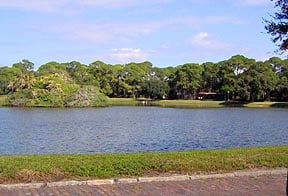Your lakes and ponds have many different functions and vary from community to community. For the most part, they collect sediment and flowing water during rainstorms, operate as fishing spots, and serve as beautiful ecosystems to enjoy year round. But when they are unmanaged, they can have physical and chemical imbalances that affect the lifespan of the waterbody and affect the surrounding ecosystem.
You should contact an experienced professional to discuss the options to fix and then protect these imbalances. Aeration is one thing that many associations turn to in order to fix years of problems. It may not be the first solution that comes to their mind, however if you have a lake covered in algae, the resulting circulation and oxygenation from aeration can make a huge difference in the long term sustainability and effectiveness of a good management plan.
Well-oxygenated water can help prevent the occurrence of undesirable algae by increasing the activity of aerobic bacteria and facilitating the conversion of phosphorus to forms that do not sustain algae growth. It can also adjust pH and other related water quality to help improve the growth of fish, native organisms and healthy green phytoplankton. Improved oxygenation and water circulation can help reduce the accumulation of organic sediment at the bottom of the waterbody. Your lake or pond will be healthier and less likely to require algaecide treatments or costly dredging.
There are four (4) types of aeration systems which you can consider.
- Floating Fountain Aerators
- Surface Lake and Pond Aerators – these are especially good for shallow waterbodies
- Submersed Diffused Aeration – these are good for deep waterbodies
- Nanobubble Aeration Treatments
Again, make sure that you talk to a professional about what lake management options work well for your community.
